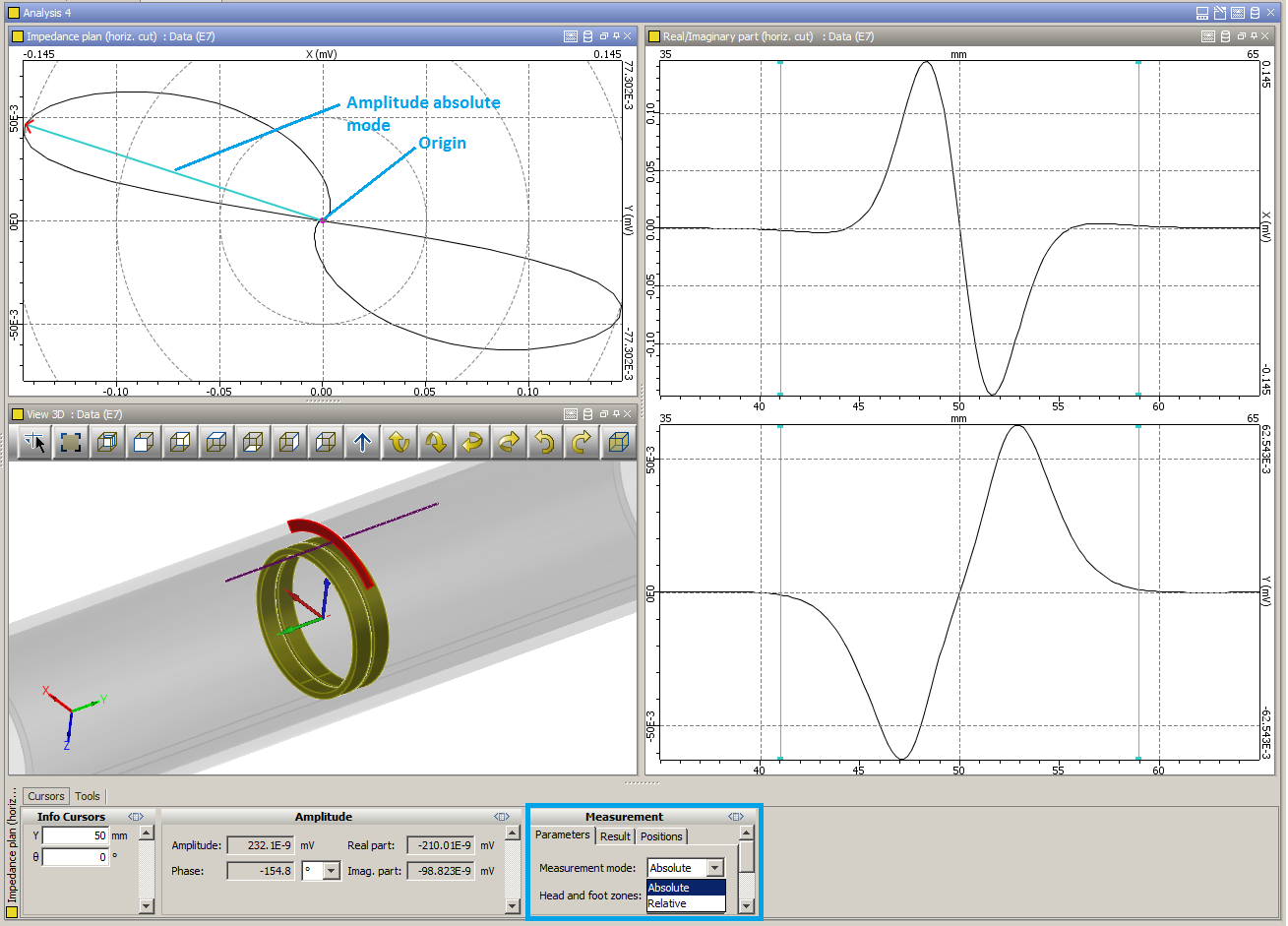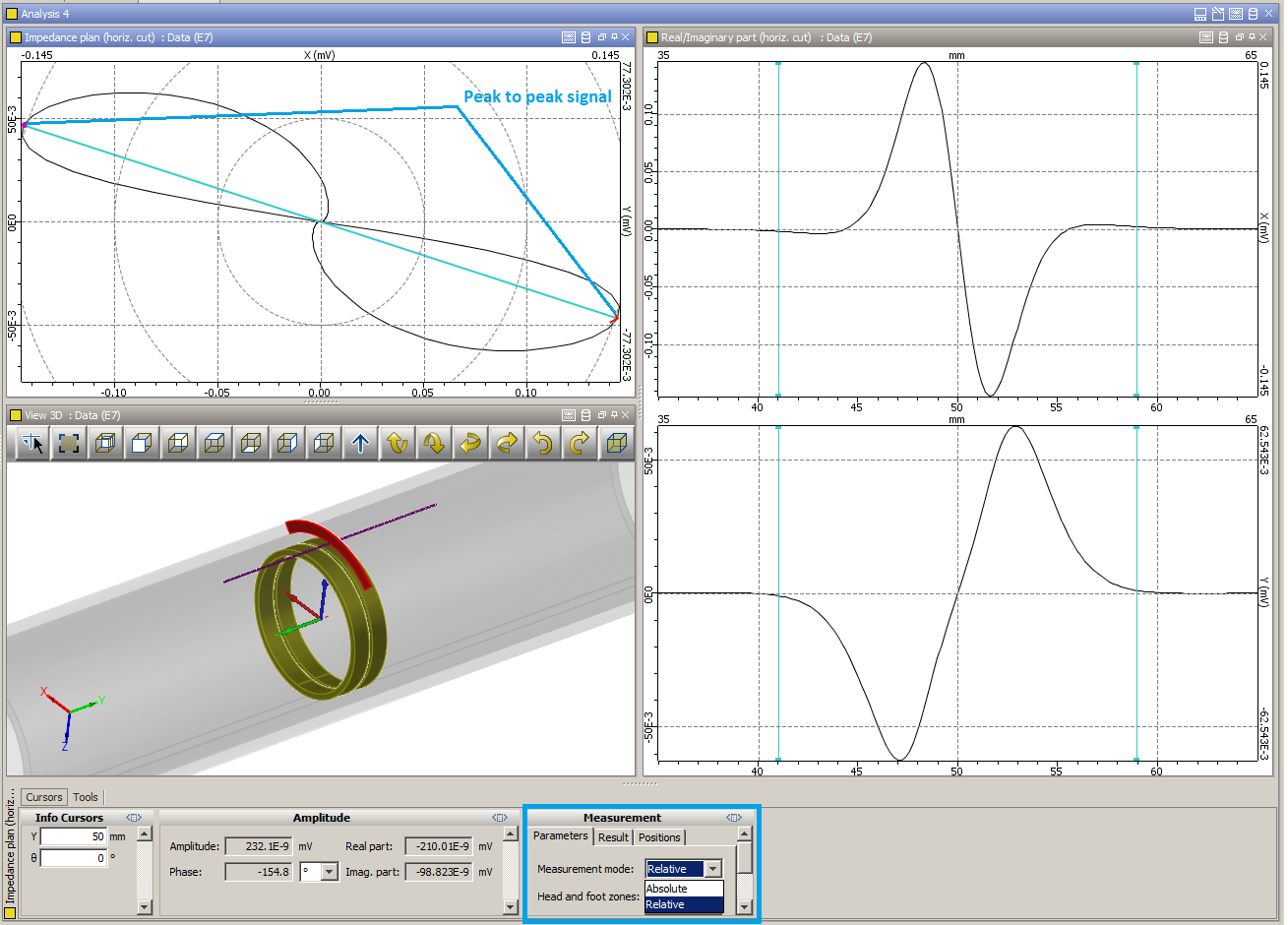Cursor Modes in Eddy Currents
Simple mode cursor
This tool can be activated from the “Image tools” menu (2nd icon, cf. image below). It enables to obtain the values measured from the origin of the impedance plane.
Simple cursor mode
Values at the different positions of the probe can be obtained by moving the cursor which controls the probe position (from the 3D view, or with the vertical cursor of one of the analysis curves), these values are given in the “Amplitude” part of the tool bar. The maximum amplitude can be obtained by moving manually the cursor at the position corresponding to the maximum amplitude of the signal in the impedance plane.
Double cursor mode
Another cursor mode is also available in CIVA, the double cursor mode. It enables to automatically obtain the maximum amplitude of a signal. This mode can be activated from the “Image tools” menu (the 1st icon allows you to switch between single cursor and double cursor mode). In this mode, the user can select two probe positions thanks to two cursors; the maximum amplitude of the signal between the cursors and its phase are then automatically given in the “Measurement” part of the tool bar.
Double cursor mode
Two measurement modes can be defined under “Parameters” tab:
- With the “Absolute” measurement mode, the measured amplitude corresponds to the amplitude of the signal from the origin of the impedance plane, as for the simple mode cursor.
Absolute measurement mode
- With the “Relative” measurement mode, which corresponds to a measure in differential mode, the given amplitude corresponds to the peak to peak amplitude of the signal.
Differential (relative) measurement mode




